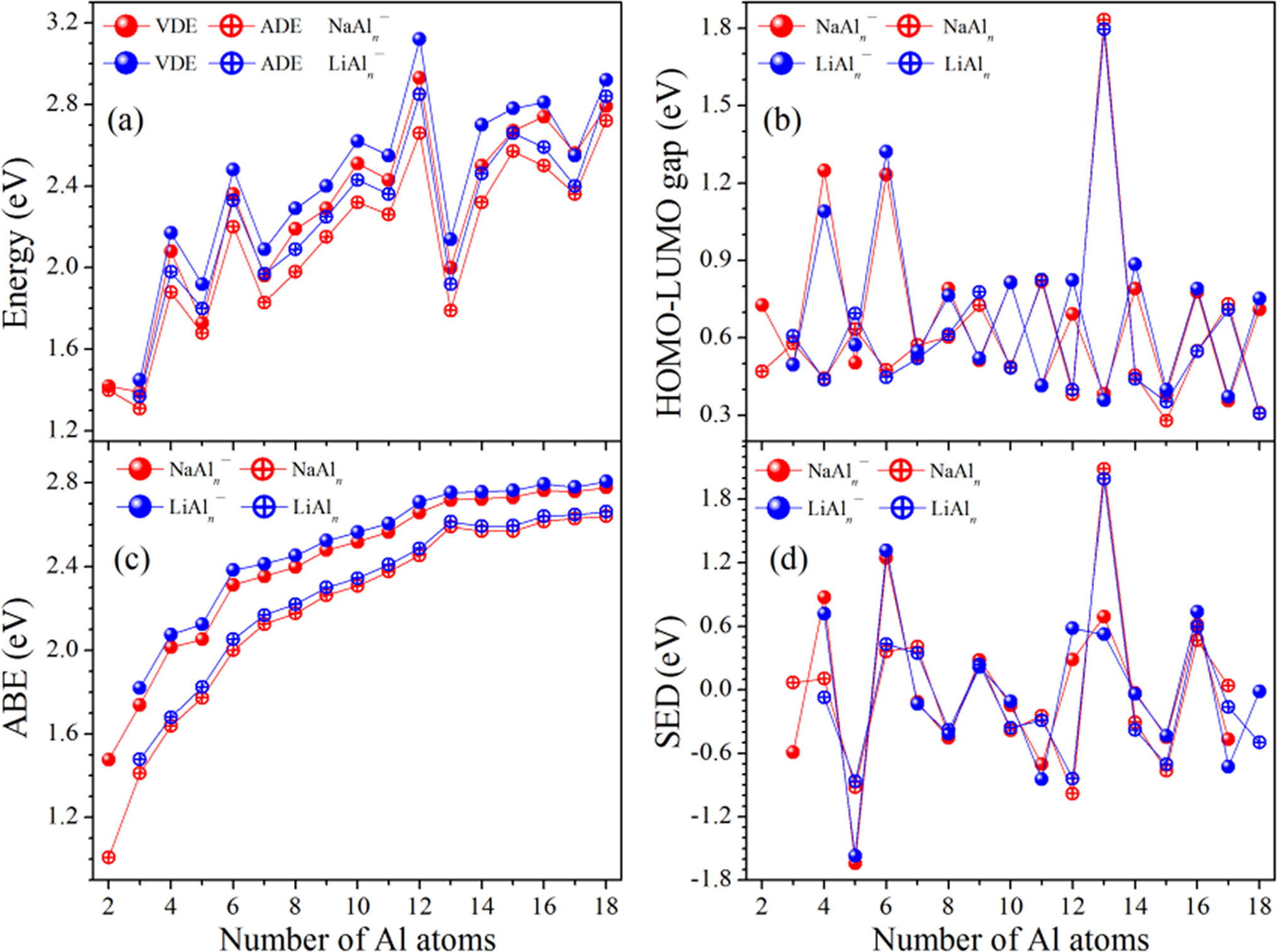https://doi.org/10.1140/epjp/s13360-025-06575-8
Regular Article
Probing the structural and electronic properties of anionic and neutral NaAln (n = 2 − 18) clusters
Henan Engineering Research Centre of Building-Photovoltaics, School of Mathematics and Physics, Henan University of Urban Construction, 467036, Pingdingshan, China
Received:
24
May
2025
Accepted:
20
June
2025
Published online:
6
July
2025
In this work, we investigated the structures and electronic properties of NaAln−/0 (n = 2 − 18) clusters through a hybrid particle swarm optimization and genetic algorithm combined with density functional theory (DFT) calculations. The ground-state configurations of anionic NaAln− (n = 2 − 18) clusters were determined through systematic comparison between theoretical simulations and experimental photoelectron spectroscopy (PES) measurements. Structural frameworks of pure Aln−/0 clusters are preserved in most NaAln−/0 (n = 2 − 18) clusters, where surface-adsorbed Na atoms universally fulfill electron–donor roles as evidenced by charge distribution analysis. The calculations demonstrate striking electronic structure analogy between NaAln−/0 and LiAln−/0 clusters, while average binding energy analyses disclose 0.02–0.08 eV/atom weaker interatomic cohesion in Na-containing clusters, correlating with their reduced structural stability metrics. Dual-parameter analysis of HOMO–LUMO gap and second-order energy difference demonstrates that NaAl13 adopts a magic number configuration paralleling the LiAl13 cluster.
Supplementary Information The online version contains supplementary material available at https://doi.org/10.1140/epjp/s13360-025-06575-8.
Copyright comment Springer Nature or its licensor (e.g. a society or other partner) holds exclusive rights to this article under a publishing agreement with the author(s) or other rightsholder(s); author self-archiving of the accepted manuscript version of this article is solely governed by the terms of such publishing agreement and applicable law.
© The Author(s), under exclusive licence to Società Italiana di Fisica and Springer-Verlag GmbH Germany, part of Springer Nature 2025
Springer Nature or its licensor (e.g. a society or other partner) holds exclusive rights to this article under a publishing agreement with the author(s) or other rightsholder(s); author self-archiving of the accepted manuscript version of this article is solely governed by the terms of such publishing agreement and applicable law.





